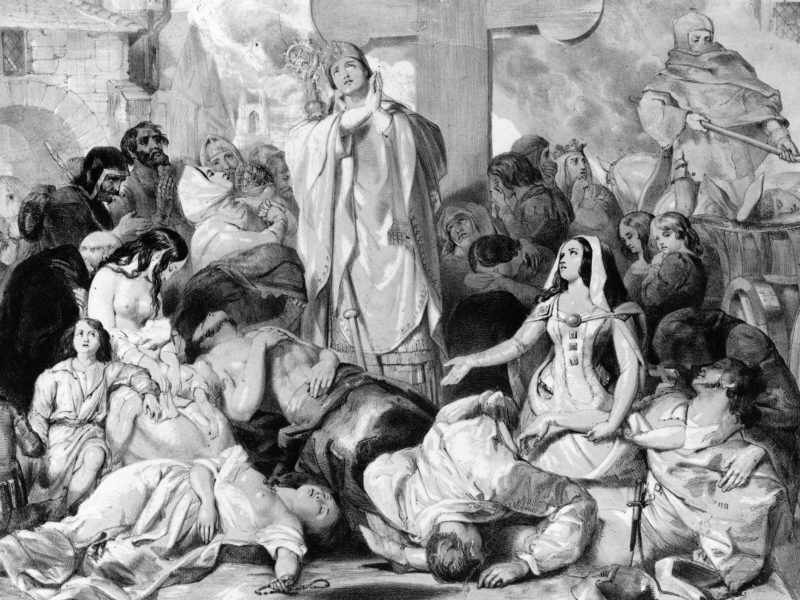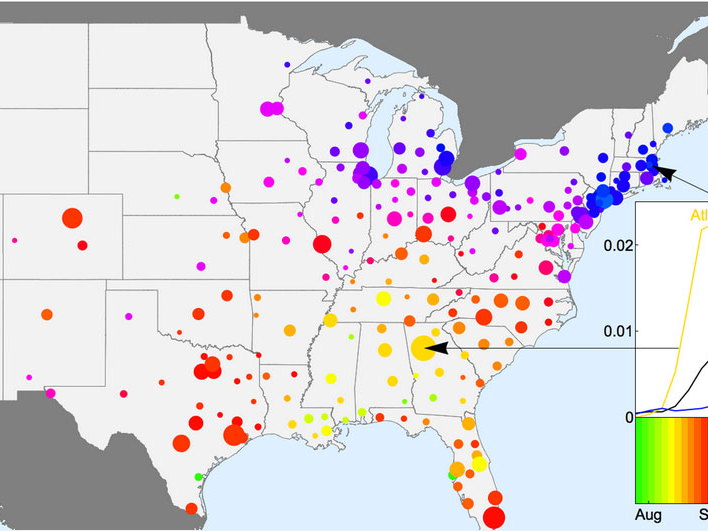- In an effort to contain the outbreak of the novel coronavirus, authorities have encouraged social distancing and the CDC has discouraged groups of people bigger than 10.
- This has facilitated a culture where a majority of the workforce is remote.
- Here are some of the other surprising ways pandemics have changed the world.
- Visit Business Insider’s homepage for more stories.
The Plague of Justinian (541 – 750 AD) brought trade to a standstill and weakened the Byzantine (aka Eastern Roman) Empire, led by Justinian I.

Historians estimate that the plague killed about half the world’s population while setting back Justinian’s military efforts. As he was attempting to reunite the Western and Eastern halves of the Roman Empire at the time, this pandemic was another player in its centuries-long decline and fall.
The bubonic plague, or “Black Death” (1347 – 1351), killed so many people that living standards improved for the survivors. It also marked the second-largest economic contraction in UK history, according to a Deutsche Bank report.

A Deutsche Bank report looking at economic contractions in the UK going as far back as 1271 noted that the second largest was during the Black Death. The economy contracted by 23.5% in 1349.
“The mortality rate as a result of the bubonic plague outbreak then was far in excess of today’s pandemic, with the Bank of England dataset showing that the English population fell from 4.81m in 1348 to just 2.60m in 1351, a reduction of over 40% in the space of 3 years. But it goes to show that pandemics have gone hand-in-hand with major economic contractions through history,” Deutsche Bank’s Jim Reid noted.
An estimated 60% of Europe’s population died as a result of the plague. As Bloomberg’s Andy Mukherjee notes, it killed so many people that living standards actually improved for the survivors. Indeed, there was greater upward mobility afterward, and some historians consider it the beginning of serfdom’s long decline.
The Black Death was also a turning point in the intensification of European prejudice and bigotry against minorities, particularly Jews and Roma.
Smallpox (15th - 17th centuries) paved the way for the colonization of the Americas and changed how money was valued, both crucial points in the development of modern capitalism.

Smallpox killed as much as 95% of the native population of the Americas, largely before Europeans began their conquest. The mineral wealth exploited from "the New World" in the form of gold and silver led to massive inflation in the Spanish Empire and the resulting "price revolution" changed how money was valued, a crucial moment in the development of modern capitalism.
The Cholera pandemic (1817 - 1823) highlighted the importance of proper, modern sanitation and the consequences of wealth inequality amongst countries.

Cholera, at first, illustrated the importance of modern sanitation, given its transmission through contaminated food or water. As it has persisted in the poorer countries of the world and become its longest-running pandemic, cholera highlights the dire consequences of wealth inequality. It still affects millions today, skewed largely toward countries with a lack of social development.
The aftermath of the Spanish Flu (1918 - 1919) stressed the importance of research into outbreaks of that scale.

After the Spanish Flu died down, significant research went into understanding how it broke out, helping to lessen the impact of subsequent pandemics. It infected about 500 million and killed about 50 million people globally. But governments at the time downplayed or even denied its seriousness, with its name coming from the fact that Spain was one of the few to acknowledge it. Some modern governments have responded to the coronavirus with similar downplaying or denials.
The "Hong Kong Flu" or H3N2 (1968 - 1970) highlighted the importance of vaccines in containing diseases.

H3N2 was an exceptionally contagious pandemic, as 500,000 became infected within two weeks of the first outbreak.
The HIV/AIDS outbreak that continues to this day has brought visibility to members of the LGBTQ community, which was disproportionately affected by the pandemic.

HIV/AIDS, which first broke out in the 1980s, continues to impact the lives of people today and its negative influence on the global economy is still being studied. It had a massive social impact, as the global LGBTQ community became vocal and visible in unprecedented ways because of the outsized impact on its members.
The SARS (2002 - 2003) outbreak increased awareness about preventing viral disease transmission.

Ever since the SARS outbreak, public surfaces in Hong Kong have been regularly sanitized and face masks have become a common sight on the street. The coronavirus may yet play a similar role in other countries.
Swine Flu (2009 - 2010) was a fast-moving outbreak that should have changed the world in more ways than it did.

A major legacy of the Swine Flu may have been how it exposed the persistent vulnerability of many countries with advanced healthcare systems to a fast-moving, flu-like outbreak. Now that the coronavirus has created a socially distanced world, Swine Flu stands out as a pandemic that didn't change the world - but probably should have.
Ebola, which began in 2014, is estimated to have cost a total of $4.3 billion.

Inbound investments dramatically dropped in Guinea, Liberia, and Sierra Leone in the aftermath of the Ebola outbreak. Like Swine Flu it was zoonotic, jumping from animal species to humans, as the coronavirus appears to have done.
The ongoing coronavirus pandemic (2019 - present) has pushed the world toward a recession and created a work environment where most employees are remote.

The novel coronavirus or COVID-19 pandemic has pushed the world toward a recession, as its largely uncontained spread prompted governments to encourage social distancing in an attempt to limit infection. By March, the American economy saw record levels of unemployment and a plummeting stock market. It also resulted in an unprecedented number of people working from home indefinitely, with untold ramifications for the future of office life.
